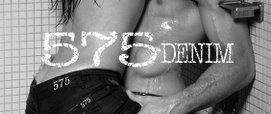
The wonderful day associated with love, romance, and courtship just passed again. For many, this day brings chocolates, flowers, balloons, jewelry, and fine dining and for others it's a day to remember unity, and togetherness among loved ones. Whatever Valentine's Day means to you, I hope you consider taking measures to find out exactly why we celebrate this holiday.
I high school, Valentine's Day was always just a way to show off how much cards, candies, and flowers you would get. It was a way to let your crush know you were into them, and for ladies ecspecially, it was a way to get romantic with your boo. Now that I am much more older and mature, I want less of the candies, and stuffed animals, and more understanding of this holiday.
This valentines, me and my better half decided to kick the sappy valentine traditions to the curb. No Russell Stovers chocolates, no singing teddies, and definitely no balloons. We decided to do grown up things so we made an agenda up to fulfill that. We included on that agenda, dinner because neither one of us felt like cooking, a trip to Barnes & Nobles to brush up on our intellect, a trip to their starbucks for vanilla bean frappucinos, record shopping at a local PLAN 9, and video games on our PC. I must say, it was much like a normal day but of course, we added a little spice. Throughout the day, we had to spontaneously tell eachother what we remember about our first encounters with eachother. With each reminder came a 5 minute reminiscing session which made us laugh and overall, remember why we fell in love with eachother in the first place. Sounds corny but hey we both enjoyed it. Before we challenged each other to a game of Sonic, we looked up the origin of Valentine's Day. Below is an article that we dug up from history.com. Of course you know what came after lights out but that's a whole other story in the making.
One legend contends that Valentine was a priest who served during the third century in Rome. When Emperor Claudius II decided that single men made better soldiers than those with wives and families, he outlawed marriage for young men -- his crop of potential soldiers. Valentine, realizing the injustice of the decree, defied Claudius and continued to perform marriages for young lovers in secret. When Valentine's actions were discovered, Claudius ordered that he be put to death.
Other stories suggest that Valentine may have been killed for attempting to help Christians escape harsh Roman prisons where they were often beaten and tortured.
According to one legend, Valentine actually sent the first 'valentine' greeting himself. While in prison, it is believed that Valentine fell in love with a young girl -- who may have been his jailor's daughter -- who visited him during his confinement. Before his death, it is alleged that he wrote her a letter, which he signed 'From your Valentine,' an expression that is still in use today. Although the truth behind the Valentine legends is murky, the stories certainly emphasize his appeal as a sympathetic, heroic, and, most importantly, romantic figure. It's no surprise that by the Middle Ages, Valentine was one of the most popular saints in England and France."
"In Great Britain, Valentine's Day began to be popularly celebrated around the seventeenth century. By the middle of the eighteenth century, it was common for friends and lovers in all social classes to exchange small tokens of affection or handwritten notes. By the end of the century, printed cards began to replace written letters due to improvements in printing technology. Ready-made cards were an easy way for people to express their emotions in a time when direct expression of one's feelings was discouraged. Cheaper postage rates also contributed to an increase in the popularity of sending Valentine's Day greetings. Americans probably began exchanging hand-made valentines in the early 1700s. In the 1840s, Esther A. Howland began to sell the first mass-produced valentines in America.
According to the Greeting Card Association, an estimated one billion valentine cards are sent each year, making Valentine's Day the second largest card-sending holiday of the year. (An estimated 2.6 billion cards are sent for Christmas.)
Approximately 85 percent of all valentines are purchased by women. In addition to the United States, Valentine's Day is celebrated in Canada, Mexico, the United Kingdom, France, and Australia.
Valentine greetings were popular as far back as the Middle Ages (written Valentine's didn't begin to appear until after 1400), and the oldest known Valentine card is on display at the British Museum. The first commercial Valentine's Day greeting cards produced in the U.S. were created in the 1840s by Esther A. Howland. Howland, known as the Mother of the Valentine, made elaborate creations with real lace, ribbons and colorful pictures known as "scrap"."



